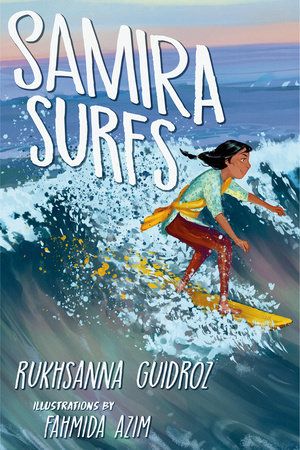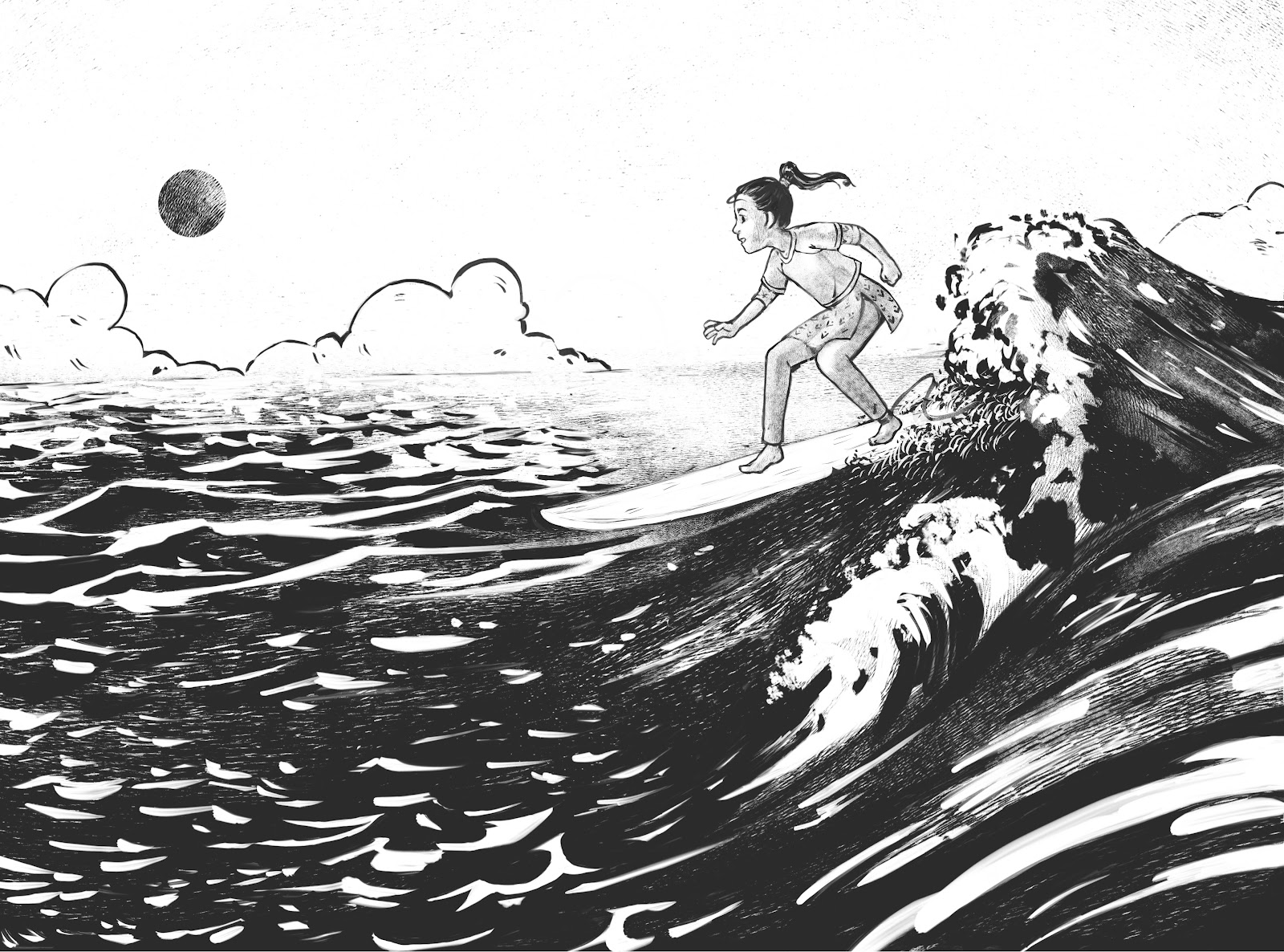Take a closer look at “Samira Surfs,” a contemporary children’s book by Rukhsanna Guidroz

A few minutes every morning is all you need.
Stay up to date on the world's Headlines and Human Stories. It's fun, it's factual, it's fluff-free.
11-year-old Samira’s life is made up of befores and afters. Before the violence and persecution that consumed her village, Samira had a life in Burma. After fleeing her country on a perilous river, she lost her friends to distance and her Nana and Nani to the water. Hurled into their new life in Cox’s Bazar, Bangladesh, Samira and her Rohingya family struggle to stay afloat as undocumented people.
They hoped for freedom in a predominantly Muslim country, but the refugee camps are full, the city bans them from steady employment and the locals spurn their presence. Samira sells hard-boiled eggs on the beach to contribute to her family’s earnings, though she yearns for an education. But, in a world engineered for male success, her father was forced to spend what little money they possess on sending her brother to school instead of Samira.
And then there’s before Samira caught a glimpse of girls surfing, when she feared the waves might take her like they took her grandparents. And after, when the news of a surfing contest with a cash prize entices Samira to best her fear and learn to surf in secret. She longs to prove to her family that girls, just like boys, can make a difference.
What inspired “Samira Surfs?”

Written in verse by Rukhsanna Guidroz and vividly illustrated by Fahmida Azim, “Samira Surfs” opens up a story of persecution, displacement and sisterhood to middle school readers. Both Guidroz and Azim offered TMS insight into the thought and artistic process that gave us a tale of triumph from a girl haunted by loss.
Wrapped in a summery dress, Guidroz reflects on her inspiration for the book. “[Like Samira,] I have the experience of learning to surf and going through the challenges,” says Guidroz. “I grew up in a part-Muslim household, my father’s Muslim. So I am accustomed to certain cultural traditions. When I read a story about a group of girls surfing in Bangladesh, I knew for them that it would have been challenging to break through those cultural barriers and defy what they had grown up knowing as important values within their families, the community and their faith.”
Azim also has a personal connection to the story as an immigrant and Bangladeshi woman. “I’m from Bangladesh, I was born there. I spent a bit of my childhood there, then I moved to the US,” says Azim. “I had a lot of understanding of the context that these girls were working in. And it was the first time that I heard about this surfer club … I found it very relatable, particularly because I have had my own experiences, wanting to do things for myself, like my art career, that wasn’t condoned by my parents who are from rural Bangladesh.
“I could really see that back and forth between wanting to do something that’s your own and the barriers in your way, like your parents’ concern for you.” Azim pauses and adjusts her glasses. “Growing up, I didn’t have stories about anyone or rarely heard of anyone who even knew the place where I was from. So I resonated with it. I wanted to do my best to make these full fledged characters really shine in this rare story.”
Tackling complex issues in middle grade fiction
It’s rare to read about complex issues like religious persecution or structural inequity in middle grade fiction. You’ll more often find these issues tackled in NPR programs or adult nonfiction. Yet despite the ongoing conversations about topics like displacement, violence and sexism, many adults remain unmoved or uneducated.
“I think complicated things like refugee crises, when you tell them in a way that even children can understand, I think it reaches an even broader audience,” says Guidroz. “And I think it can speak to more people and pull on more universal commonalities. Kids are more ready to understand the things that they hear about on the news, or the issues that their parents may whisper about, or these complicated journeys of other kids around the world. I think they’re more ready to delve into it than we give them credit for.”
Azim firmly nods in assent. “Have you ever heard of the saying, like, you’re not an expert until you can explain it to a 5-year-old?” asks Azim. “ If we can explain these things to children, then even adults will have a better understanding.”
Creating the verse and the art

The styles of prose and verse have varying connotations for readers. While many view prose as more accessible, some people associate verse with more traditionally elusive works from poets and authors like Shakespeare and Milton. So why write a children’s book in verse? If you think back to the first books your parents, teachers or siblings read aloud to you, many of them are written in verse.
“I’m attracted to the style of novel in verse,” says Guidroz. “Because I think the crystallizing of ideas into a few words can be really powerful … I felt like it would make it more accessible to a younger reader. I know a lot of young readers who are intimidated by pages of lines of writing and it seems like a lot of them.
“[‘Samira Surfs’] ended up being around 400 pages. But when they flick through it they see it’s short verse. And it’s amazing how many kids just say, ‘oh, OK, I can read this.’ Because visually, it’s not overwhelming for them.”
Flipping through the book and taking in the verse and the art, you get the sense that “Samira Surfs” poured out of the mind of an 11-year-old. Azim’s art breathes with childlike joy, brimming with movement. The cover deptics Samira catching a wave with a determined smile. Foam bubbles at the edges of the water and sunset creeps along the horizon.
“My view of age and how the aging process works is that when you’re an adult, it’s not that you’re not five anymore,” says Azim. “You’re five and also whatever adult years you’ve racked up … So in addition to being 26, I also feel like I’m 10, I’m 15. I have had all of these milestones and experiences … So when I hear stories from the perspective of children, I feel empathetic. I feel what they’re feeling, and I can access those spaces.”
Look for “Samira Surfs” by Rukhsanna Guidroz and illustrated by Fahmida Azim at your local bookstore and online at Penguin Random House and Barnes & Noble.
Have a story to share? Get in touch at contributors@themilsource.com

Comments ()